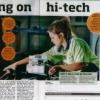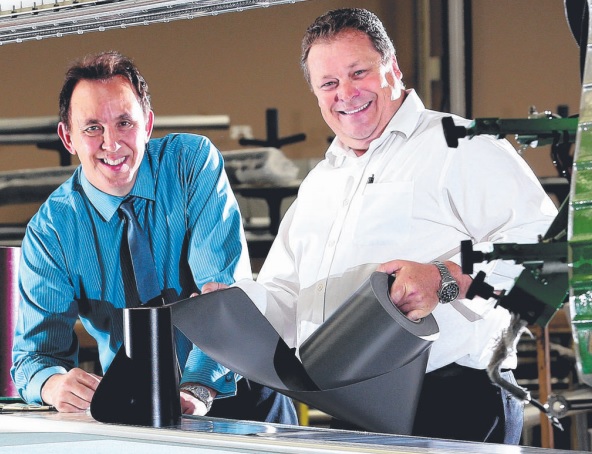
Hinging On High-Tech
The Advertiser. "Career One lift-out". Saturday 28th April 2012
by Cara Jenkin
SKILLED staff and smart ways of working are in high demand to advance the nation's manufacturing industry, which has a more secure future than employment numbers show.
Manufacturing is the only industry in which employment is forecast to decline in the five years to 2016, the Federal Government reports.
In the past year, employment in the industry fell by 53,800 workers and is predicted to fall even further in the next five years by 30,400 positions.
Yet Manufacturing Skills Australia says almost all manufacturing enterprises report skill shortages.
The future will see a demand for smart staff who can perform hi-tech and high-value work that provides a competitive advantage over mass production.
Australian Bureau of Statistics figures show manufacturing employs about 8.5 per cent of the national workforce, or 971,200 people.
In 2001, it employed the most people of any sector on Australia.
Now, it is ranked fourth.
Within the industry there are the structural steel and welding trades (51,500 workers), production managers (42,900) and metal mechanical fitters (38,300).
MSA chief executive Bob Paton says employment decline is caused by the industry moving away from labour-intensive, low-skill work.
"Those people who are doing that work in Australia need to transition to something else but... there's a whole bunch of skills required.," he says.
For example, we have a lot of peopleto make clothing but we have a shortage of people who can make shade sails.
"We've got a project at the moment that looks at how we can transfer basic sewing skills.
"If you look at the future of traditional manufacturing, it's not very flash. If you look at opportunities that are arising, the new types of work, it's quite broad indeed.
"It's not as doom and gloom as people think."
Advanced manufacturing is the label used for hi-tech manufacturing work, which can range from the creation of medical equipment for arthroscopes, measuring just 3mm in diameter, to building huge automated machines used in manufacturing processes.
"Instead of very simple transformation of a raw metal to a simple product, it's becoming more highly complex and a specialised produc," Paton says.
It also is high-value work in which Australia can be competitive in global, mass production market among countries with cheaper labour costs.
Quality and timeliness give Australian manufacturers an advantage.
"The area Australia does really well is, in particular, high-quality goods," Paton says. "It's about finding our place to what we want to make and consume in Australia, what we want to export. The goal would be to moving out of low value-added products to more high value added."
He cites being able to make products and deliver them on demand, rather than having stock sitting at department stores, as a way of businesses across the supply chain can save money. But this requires a highly skilled workforce.
Workers skilled in metal fabrication, welding, sheet-metal work, fitting and machining have the best outlook as their skills are in demand in several industries.
Paton encourages young people to get a trade and older workers to look at how best to transfer their skills to manufacturing growth areas. He says they should train to secure the extra skills they need and find out how their existing skills can be recognised in that training.
Government programs are helping mature-age workers top up their skills to obtain a qualification and older staff also are encouraged to consider an adult apprenticeship.
LUCY'S SKILLS ARE IN DEMAND
Lucy Taylor, 21, has been working overtime to meet the demand for products sold by Australian Outdoor Living. She makes blinds through its manufacturing arm Universal Blind Assembly, which was created to overcome supply delays. "It's a fun environment," Taylor says.

